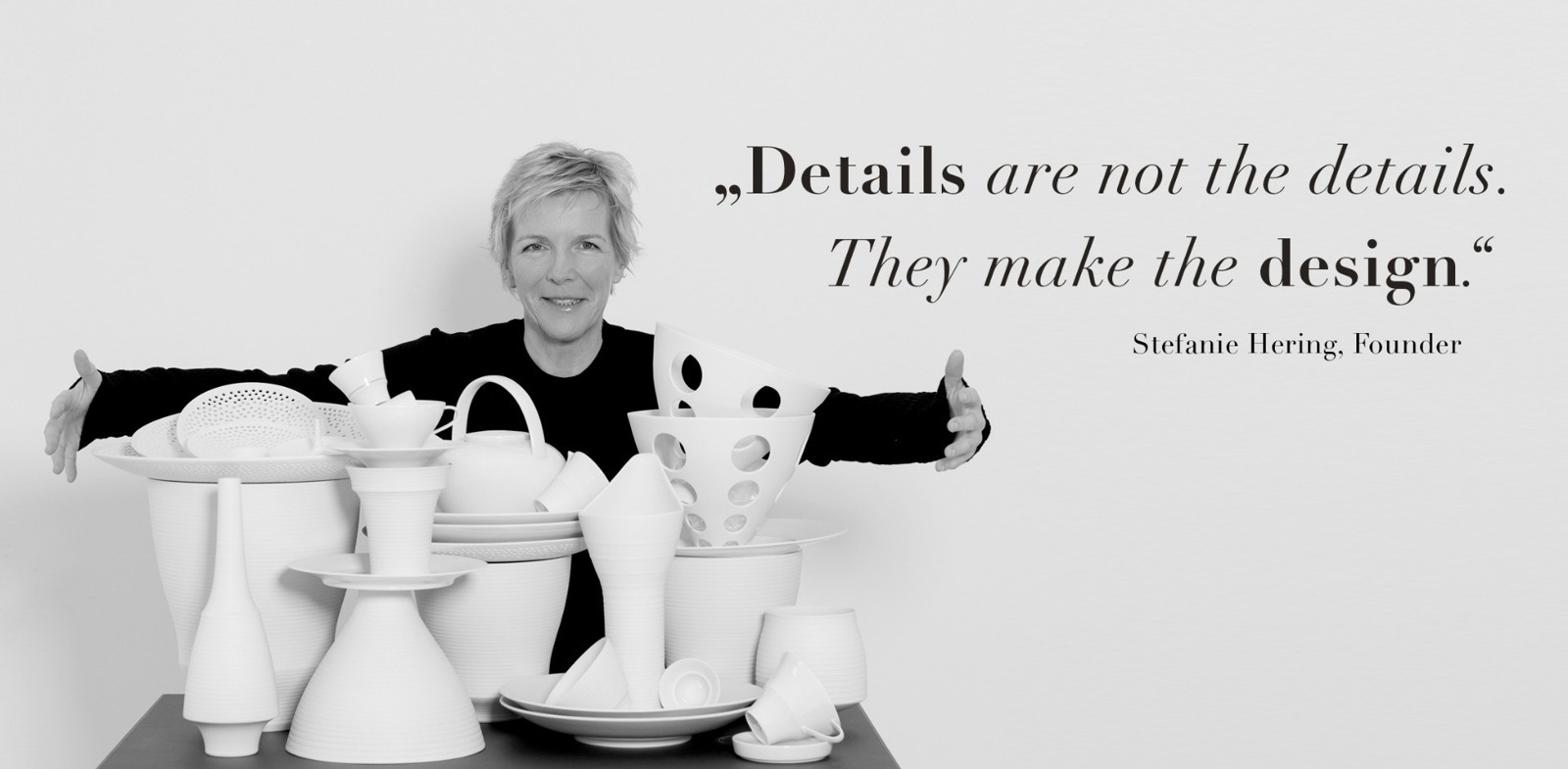Interview with Stefanie Hering
designer, artist, and entrepreneur at Hering Berlin
Stefanie Hering is a trained master porcelain maker and the focus of her internationally renowned design brand is deliberately innovative: every stage carried out entirely by hand at a site in Germany and characteristic design tailored to the small but extremely promising new market of "mindful luxury" consumers.
What makes Stefanie Hering's work truly special is the excellent shapes, which result from playing, experimenting, and trying things out, as well as from absolute knowledge of porcelain as a material. The result are the finest porcelain objects that look artistic while at the same time being highly functional and have long since found their way into important design collections, into the luxury catering and leading hotel business, and, above all, onto the tables of design connoisseurs all over the world.
What role do you think tableware plays in the ambience of a restaurant?
What's on the plate must be ingenious in terms of both taste and craftsmanship. This is a standard that also applies to porcelain in high-end gastronomy. Because top cuisine served on the finest handmade porcelain is undoubtedly a unique experience for the senses, which a growing number of international, handpicked dining establishments are focussing on. Just as it is the frame that rounds off the appearance of a work of art, in creative cuisine it is the precious, meticulously designed porcelain that completes the culinary experience and the ambience of a restaurant.
Which is decisive, the design or the haptics?
Both. My services are elegant, use a timeless yet modern design language, but are made entirely by hand in the tradition of classic porcelain manufacturers and often feature unglazed bisque surfaces with a very fine look and feel. This means that perceiving the porcelain sharpens all the senses and the culinary enjoyment is accentuated by an equally extraordinary staging.
When you started creating porcelain, you were sitting at the wheel yourself – how do you work today?
I always start with the shape, first making sketches. They are usually the same size as the objects and cover the floors in my apartment, so they can dominate the rooms in the case of very large vessels. This is how I approach my artistic idea for a new collection. I then translate my sketches and paper models into porcelain myself as prototypes and work closely with my team of craftspeople in Reichenbach on further product development. For me, this is an extremely exciting process.
What fascinates you about porcelain?
I always found it miraculous how porcelain is made entirely by hand in our workshops. Consider how complex and time-consuming this process is and how old this art is. There's something magical about it for me. Look into a kiln where the temperature is well over 1,000 degrees. The models glow and transform into these fascinating, pure white objects.
Where do you get your inspiration to create something new?
Our time and our life today, with all its speed and complexity. Nowadays, luxury is about awareness, mindfulness, and time. I counter the surplus of goods of any colour, including on the internet, with designs that are not subject to seasonal fashions, but are the classics of tomorrow. I travel a lot, go to museums, see art. I also like to browse design markets. Fashion and trends have a very important function in our world, but that is not what Hering Berlin is all about. Our unique pieces are of lasting value. The ideas for them come from respect for the material and its possibilities.
What is different about bisque porcelain that plays an important role in your designs?
For me, bisque porcelain is an appropriate and beautiful interpretation of contemporary porcelain design. The light plays with the matte surface and highlights lines and concavities on the surfaces. Porcelain has many facets – bisque porcelain brings out its exquisite qualities. And although my creations often appear extremely fragile, are coated with sophisticated, metallic-looking glazes, or play with the contrast of glazed areas and unglazed bisque surfaces, they are nevertheless able to withstand the intensive demands of daily use.
You work with selected craft businesses; does Hering also produce pieces itself?
Yes, at its site in Germany Hering Berlin manufactures pieces tailored to the small but extremely promising new market of "mindful luxury" consumers entirely by hand. We maintain our own production facilities at the workshops in Reichenbach. I carefully select the craftspeople on my creative team and work with them on site until they understand the core and essence of my designs.
And do you have any tips for the set table of the future?
Let your personal preferences guide you. I'm a fan of bisque porcelain. When you experience this quality, drink from an incredibly fine tea bowl, or discover a finely painted decoration next to a piece of cake, this is a special experience and everything tastes better.





